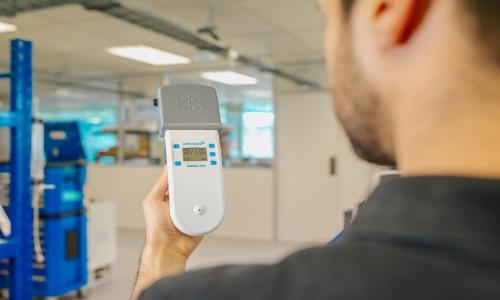Ever wondered if our public hospital indoor air quality is truly protected from harmful airborne?
While it's easy to see when you need to dust or sweep, it's harder to know when the air in our hospital or premises needs cleaning and filtering.
Since most of the hospitals are utilizing a combination of natural ventilation and air conditioning system today for enclosed areas, it is highly likely that it would promote potential IAQ issues that may lead to health implications related to indoor air quality. If there are no proper air maintenance safeguards kept in place, eventually chemical or biological contaminants will pollute the air causing health problems to the occupants.
Good Indoor Air Quality (IAQ) is desired for a healthy indoor environment. What is IAQ? IAQ is defined as the air quality within or around the buildings and structures. It is known to affect the health, comfort and well-being of building occupants.
Indoor Air Quality Assessment in a Public Hospital
Germguard has undertaken almost than 3.15 million sq. ft. of comprehensive decontamination or mold remediation work which involved infection control measures in buildings and healthcare-setting facilities.
The first thing to do in addressing the air quality is to conduct an air quality audit within the building. When you go to a hospital you will see people coming in with all kinds of illnesses. You will even notice the medical staff wearing masks. Now, what does that signify? There is fear of airborne aerosol contamination that lingering in the hospital environment.
Last September, Germguard Technologies was appointed by FG Media (Malaysiakini) to carry out a CSR campaign on Indoor Air Quality Testing upon pre and post installation of a particular air purifier at level 1: forensic and level 5: Medical officer room at a government hospital in the Klang Valley.

According to Kailash Sheth, Executive Director of Germguard and a certified IAQ Assessor, DOSH, Malaysia, the aim of this CSR campaign was simply to check and verify:
- the air improvement of air purifier usage at certain locations in the hospital
- the level of indoor air quality based on 11 IAQ parameters prior to installation and after installation of the air purifier for the period of one (1) week.
- reverse effects of air quality versus the air improvement
11 Parameters Indoor Air Quality Testing
Based on guidelines Industry Code Of Practice On Indoor Air Quality 2010 by the Department of Occupational Safety and Health (DOSH) under the Ministry of Human Resources and Hospital Support Services 2015 by Ministry of Health (MOH), there is a list of indoor air contaminants and the acceptable limits for the specific physical, chemical and biological parameters.
To maintain a good indoor air quality, we must first know the 11 different IAQ parameters stated by the guidelines. Some of the indoor air quality monitoring parameters are the carbon dioxide (CO2) level which is the most commonly present colourless and odourless gas which results from the respiration process or people activities such as burning coal, wood or combustion end products, on the other parameter is the temperature that should be within 23-26 degrees Celsius for thermal comfort.
On top of that, the relative humidity (RH) should be 40-70% RH, as elevated humidity promotes the growth of various bacteria and molds indoors whereas low humidity may result in sore eyes and throat. Air velocity within 0.15-0.50 m/s is also an important indoor air quality parameter. If the ventilation rate is very low, it may result in low indoor air quality.
There were other parameters that were also tested such as carbon monoxide (CO), respirable particulates on size PM10 and PM2.5, total volatile organic compounds (VOCs), formaldehyde, ozone, total bacteria count and total fungal count.
Kailash mentioned that out of the 11 IAQ parameters, he observed four (4) parameter indicators which are the respiratory particulates, formaldehyde, total bacteria count and total fungal count showed significant air improvement that verify the functionality of the air purifier. Whereas 7 other parameters were adequately support in this particular testing.
11 IAQ Parameters as Industry Code Of Practice On Indoor Air Quality 2010 / HSS 2015

Air Quality Testing Result Based of Four Parameters That Demonstrate a Significant Air Improvement After 1 week Installation
Formaldehyde is a colourless gas with a strong, suffocating odour. It is also natural that small amounts of formaldehyde are found in the human body. However, if the formaldehyde level exceeds the limit of 0.1ppm it can cause health effects such as watery eyes and burning sensation of the eyes, nose and throat.
Data showed that the formaldehyde sampling for all the locations were within the acceptable limit of 0.1ppm during the pre sampling, however, the significant improvement after the air purifier instalments, the formaldehyde level dropped to zero which means the air at two locations became completely formaldehyde-free. Other 3 locations were not detected with formaldehyde traces before or after installation of air purifier.
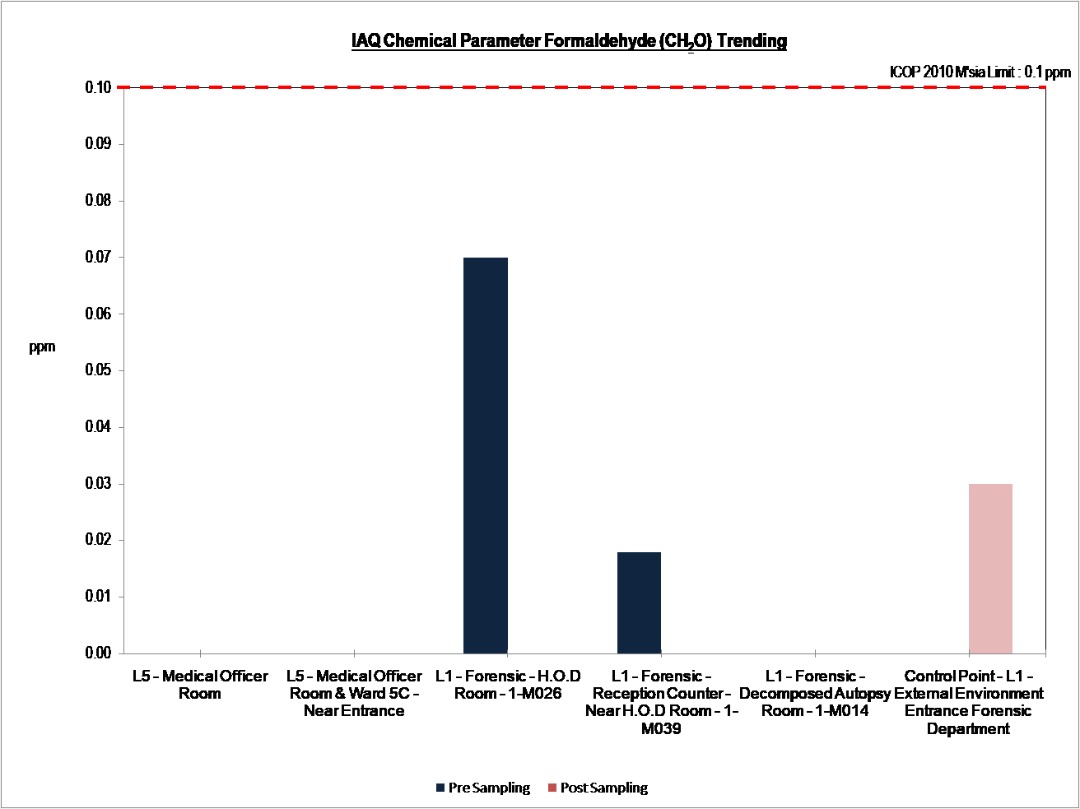
In terms of respiratory particulates, there were two types of measurements that were conducted, which are particles with a size of 10 microns or less (PM 10) and fine particles that are 2.5 microns or less in diameter (PM 2.5).
Comprised of many different substances like mold spores, bacteria, dust, and smoke, PM10 particles are small enough to enter your lungs and cause damage throughout your respiratory tract. Therefore, if the levels are above 0.15mg/m3 it is extremely harmful to the human body.
Based on the PM10 results, all locations were within the threshold limit of 0.15mg/m3 during pre sampling. The post sampling result showed an even better result as all locations have a significantly lower amount of PM10.
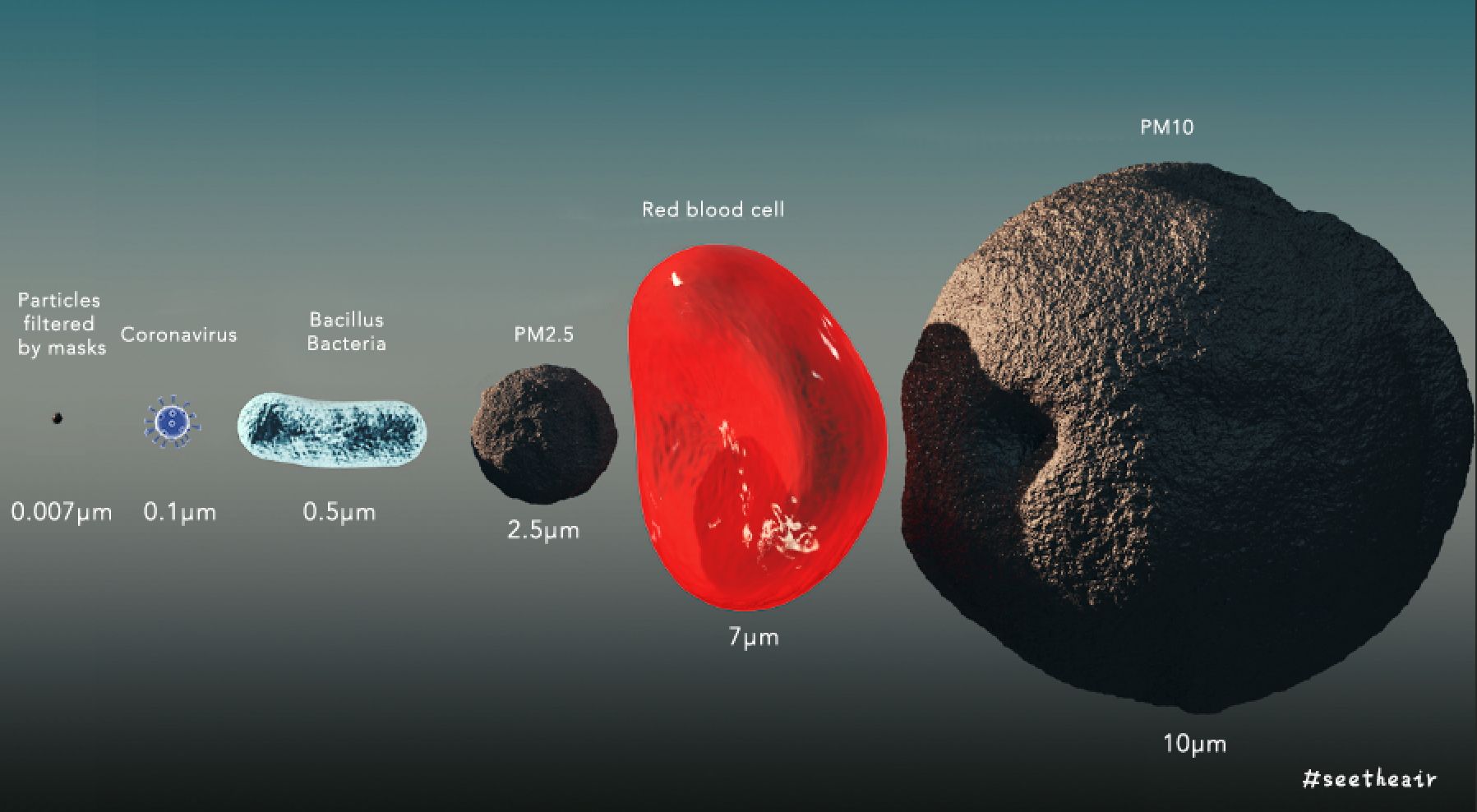
Apart from that, excessive amount of PM2.5 also goes deep into the lungs and would cause a broad range of health effects, in particular, respiratory and cardiovascular illnesses. Therefore, it is vital to remove or reduce this airborne particulate matter. The PM 2.5 particles in the air, showed a very drastic change as the after result showed the level is much lower compared to the pre sampling.
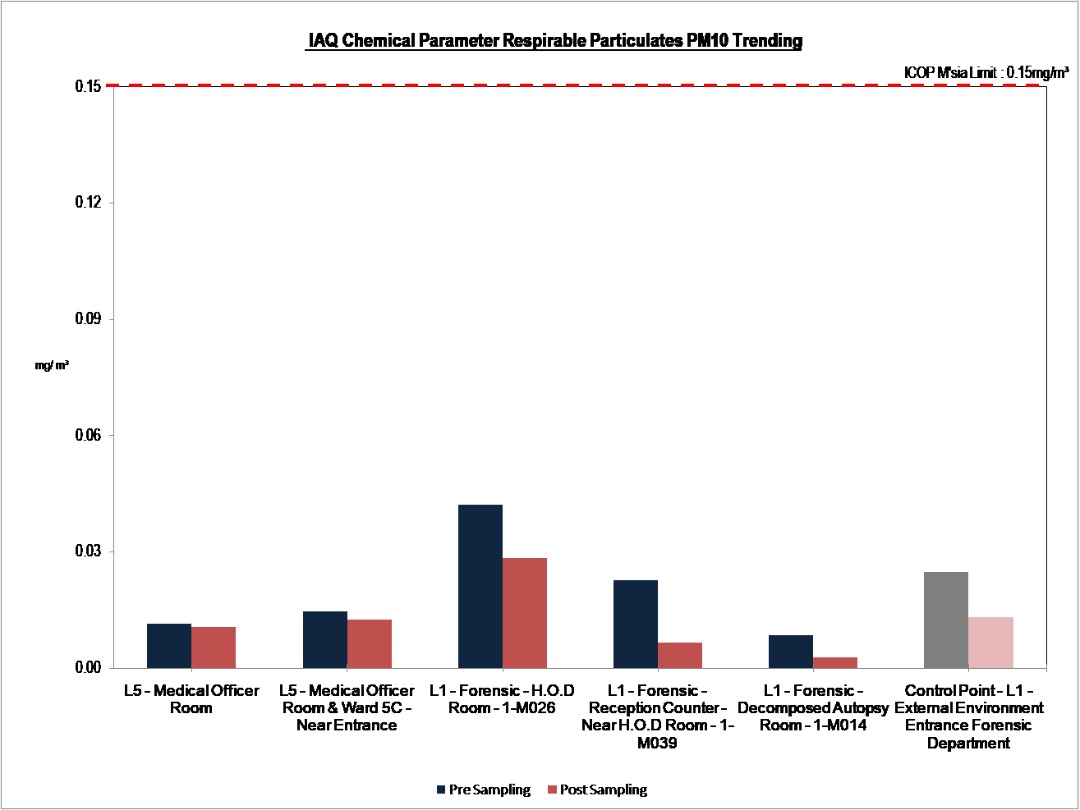
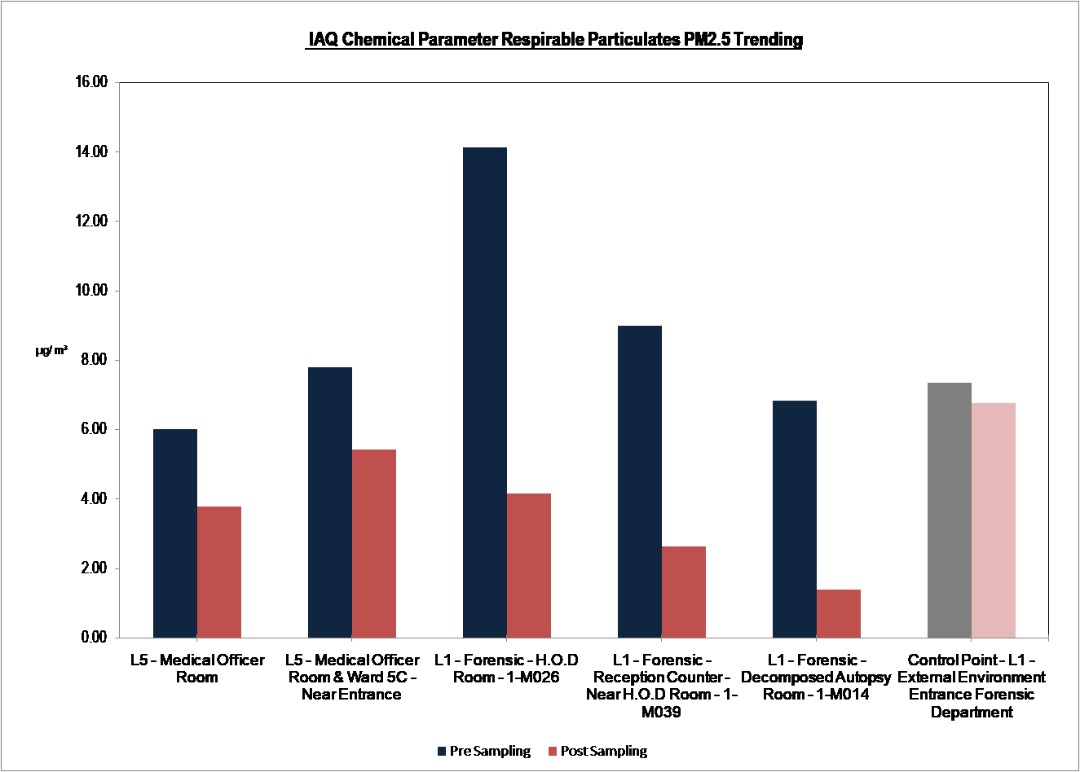
Microbiological air quality is also an important criterion that was taken into account. This is because over exposure of airborne bacteria and fungi would cause several adverse effects, especially infectious, allergenic, and immunotoxin disorders.

The present study showed that the indoor air assessment of airborne bacterial and fungal count during the post air purifier installment plummeted drastically compared to the pre installment in all the 5 areas which means the air is much cleaner than before.
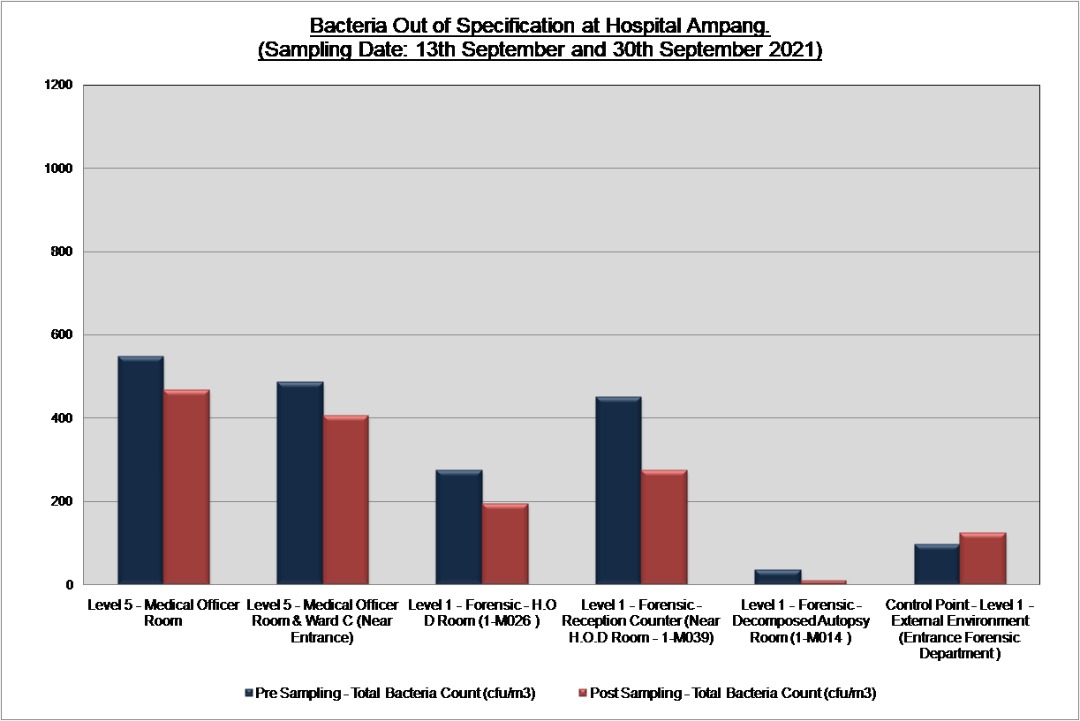
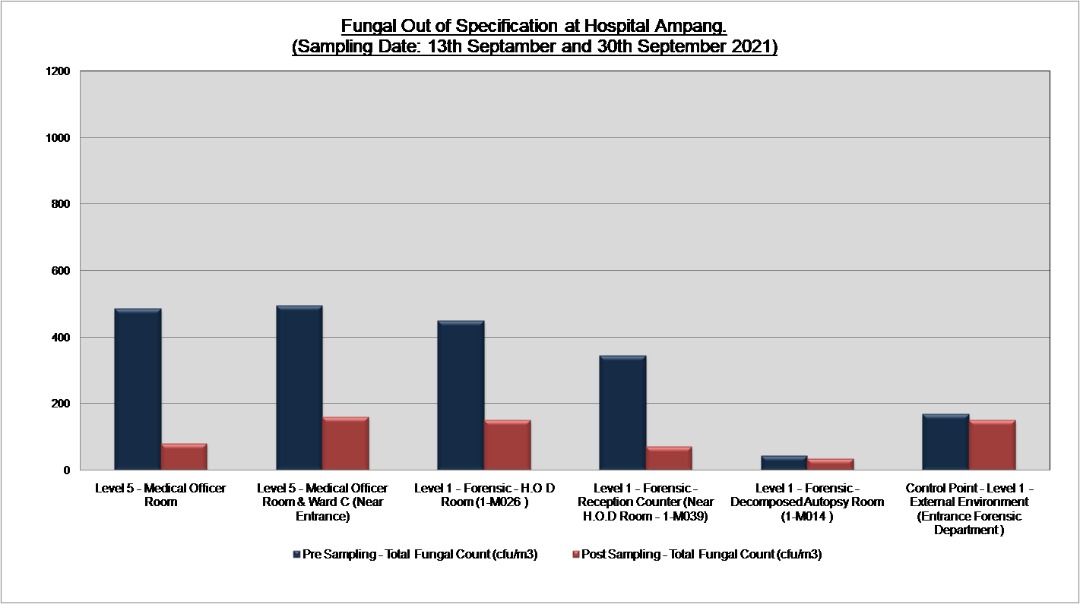
Overall, most of the sampling locations at Level 1 and 5 showed air improvements particularly the four (4) IAQ parameters as illustrated in the chart after 7 days of installation. This shows that air purifiers can assist to neutralize some of the air contaminants threat posed by the indoor air.
However, it is also equally important to note that we should always emphasize on the source removal of the indoor air contaminants prior to or before installing or placement of air improvement devices.
Knowing the parameters and standards of indoor air quality will eventually give you a ‘Key’ to a healthy indoor environment and healthy life!
Are you searching for a suitable air purifier for your home or premises? Check out Blueair purifiers initiative to provide clean air and support vulnerable Covid-19 patients HERE
RM12.50 / month
- Unlimited access to award-winning journalism
- Comment and share your opinions on all our articles
- Gift interesting stories to your friends
- Tax deductable
